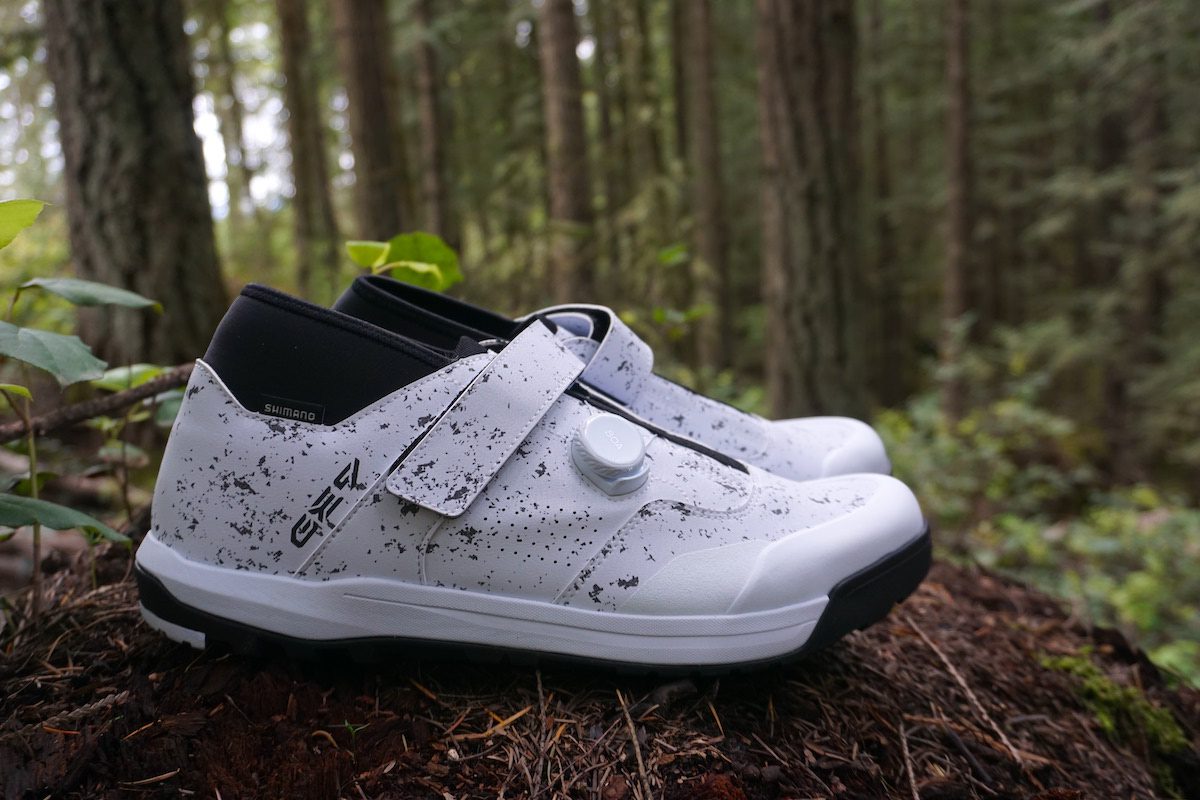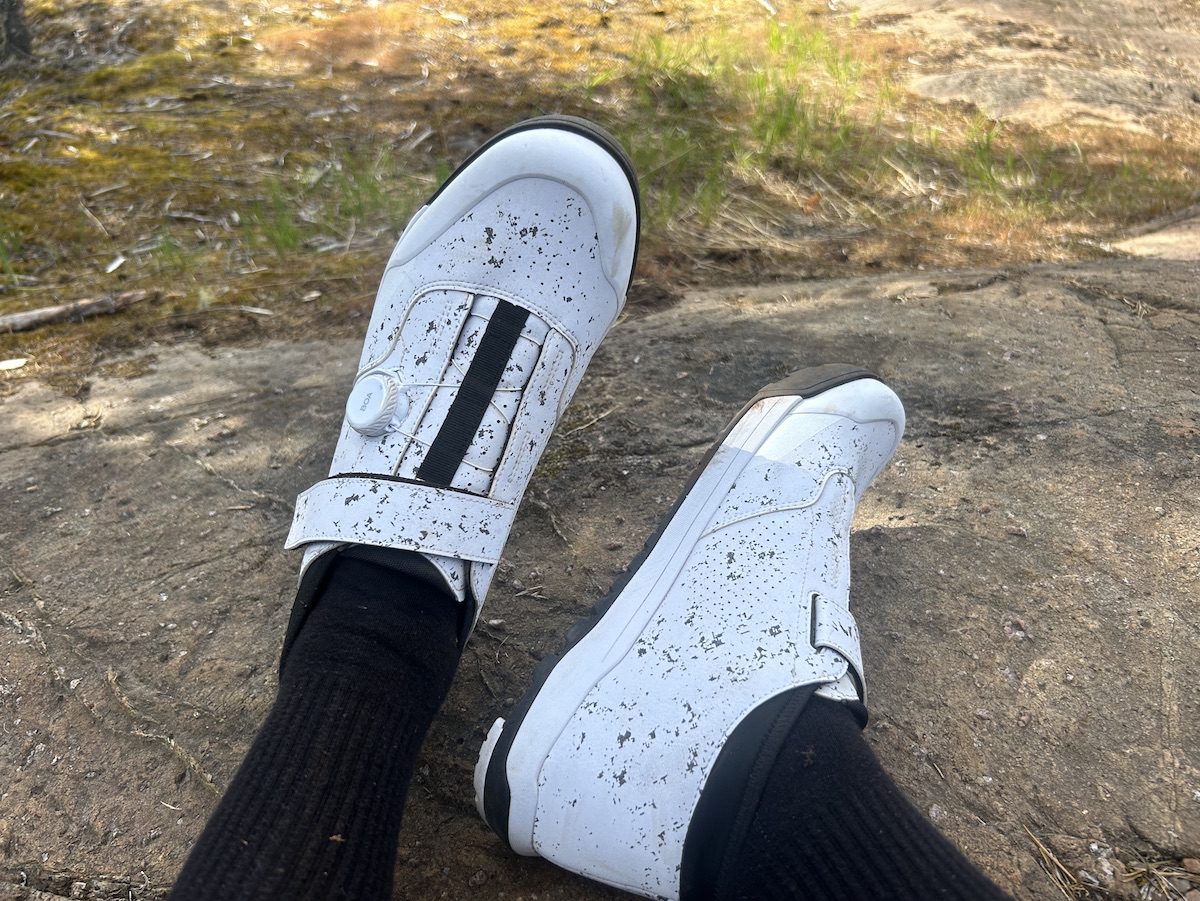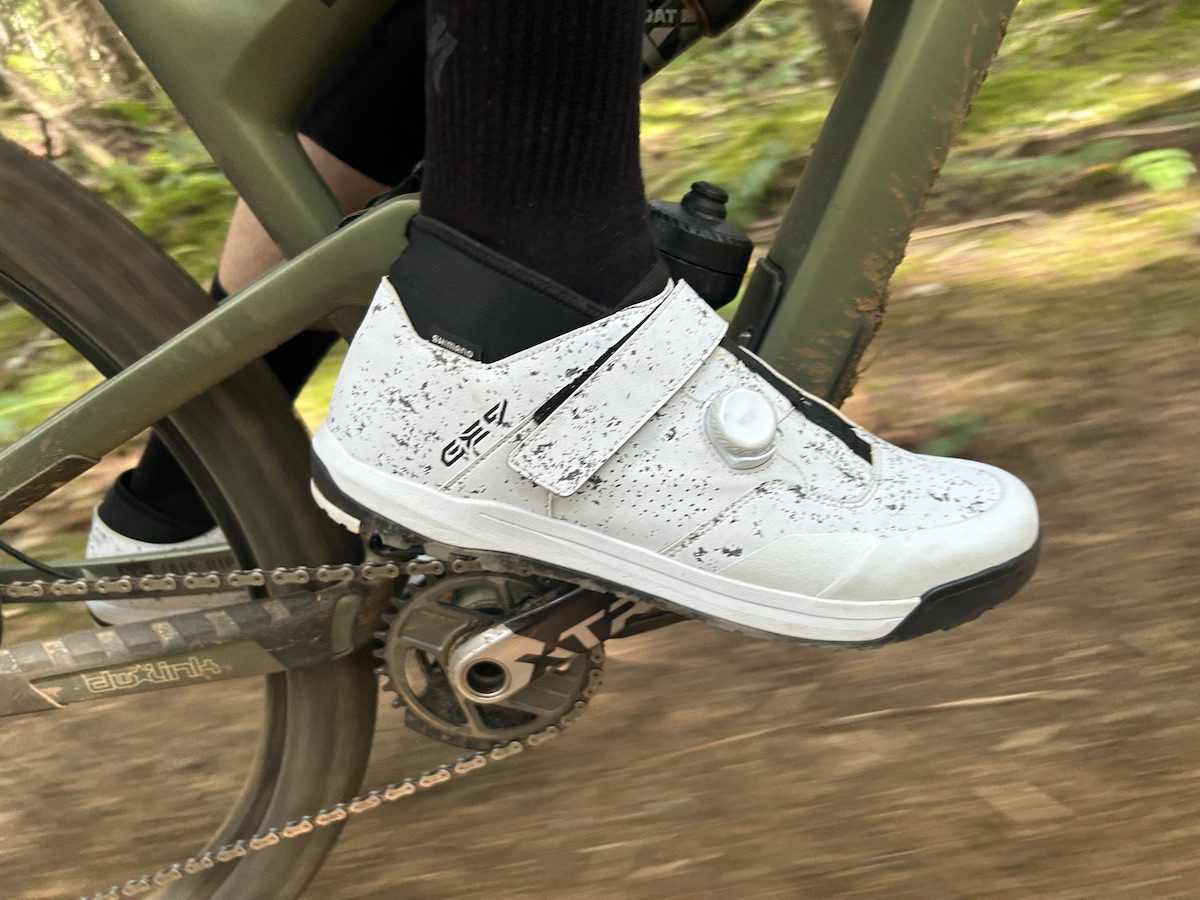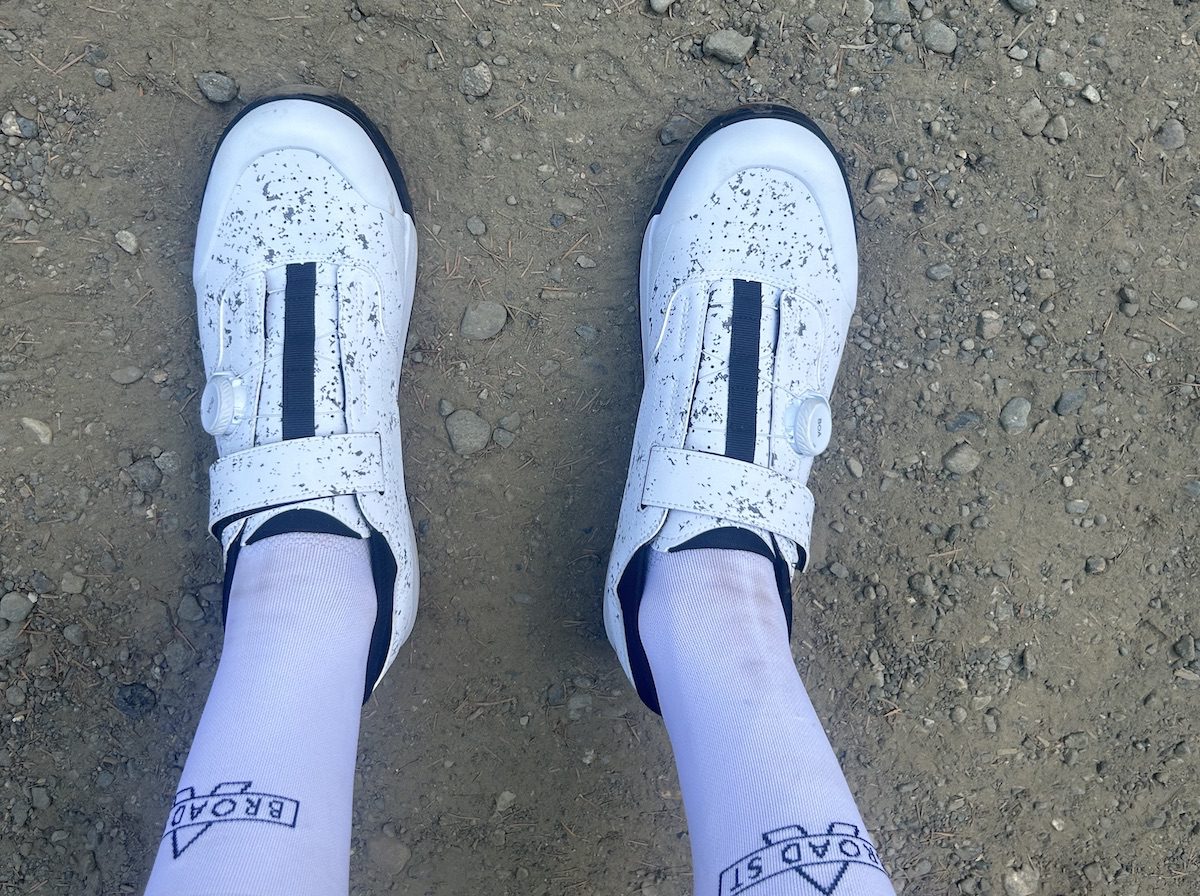Shimano’s new “Hot Seat” version of the GE900 looks a lot like the standard GE900. Other than the bold, white colour, of course (it also comes in black). But some key details elevate the the GE900 HS above the shoe it builds off of.
While the name hints at race-focused performance, after six months on the GE9 HS, we think it has benefits far beyond the confines of race tape. For the right rider, it could be a new high-water mark in Shimano’s gravity shoe line.
Shimano GE9HS: What’s new?
There are a host of small changes to the GE9HS that separate it from the GE9. This starts with stiffer construction (the midsole is now an 8 on Shimano’s scale, where the GE9 is a 7), to provide more control and efficiency on the bike. The EVA on the mid-sole is also 25 per cent stiffer. But stiffness is just the start.
One small detail is the move to Boa Li2 Type F dials, with a small plastic shield to protect them from ripping off. This adds two-way micro-adjustments to fit over the standard Boa L6 dial on the GE9. The synthetic leather outsole has less padding than the GE9, giving a closer fit and more precise feel to the shoe.
In general, the GE9HS looks more polished than the GE9. That’s down to a few details, like the removal of the Torbal 2.0 midsole. Shimano uses “Force Control” midsole in its place on the GE9HS. Hidden lace guides for the Boa laces add to the look. As does moving the neoprene cuff to the outside of the ankle cuff instead of attaching on the inside of the shoe like on the GE9. Shimano keeps GE9 HS shoe construction one colour throughout the shoe, whether that’s black or the very race-day white splatter, adding to the clean look.
Fit changes slightly from the GE9, with an ever-so-slightly narrower toe box and a slightly different shape moving from the toes to the middle part of the foot.
Riding the GE9HS: More efficient and supportive, every day
I’ve been riding the GE9HS for a good six months at this point. I sit between a 46 and 47, and Shimano was kind enough to send out both to compare fit. Both sizes have been in rotation, along with a pair of GE9 for comparison.
While there isn’t a huge change in stiffness to the midsole, it is noticeable. I think the change to the rest of the shoes construction contributes as much to the different feel of the GE9HS compared to the standard GE9. Having less padding on the HS gives it a more snug and more direct feel that the GE9. That made it, I think, easier to crank the dials and laces to a tight fit, where it didn’t feel like my foot was moving around at all, without having to squish my foot in. I’ve really liked the GE9 in the past. Each time I went back to that from the HS version, though, it felt bulkier and softer than I remembered.
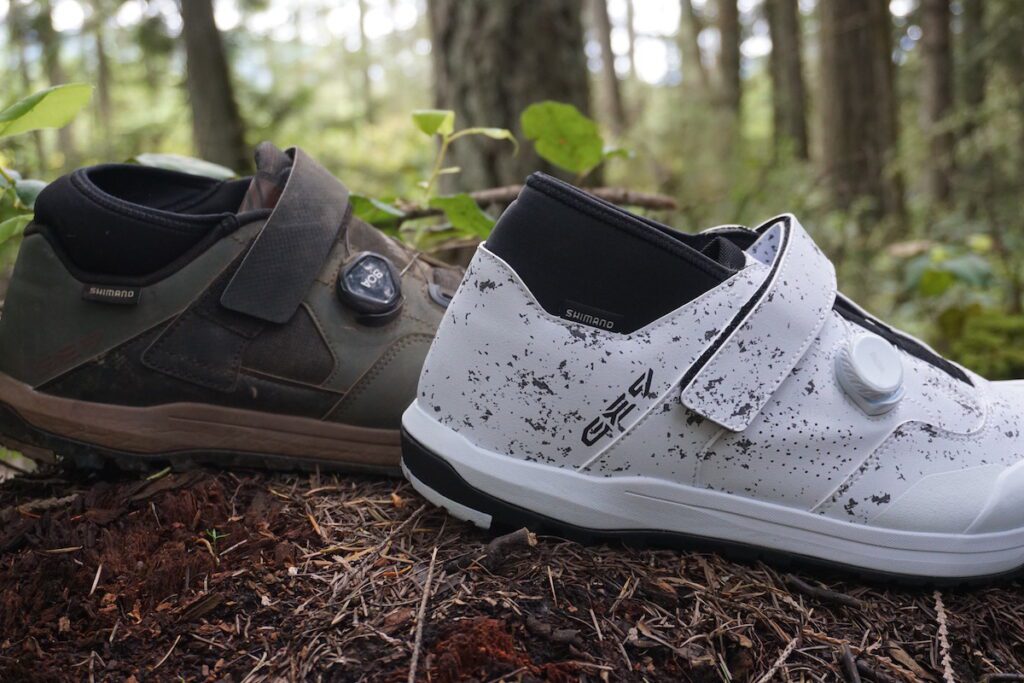 Concealed laces and a lace guide give the Hot Seat’s a clean look
Concealed laces and a lace guide give the Hot Seat’s a clean look 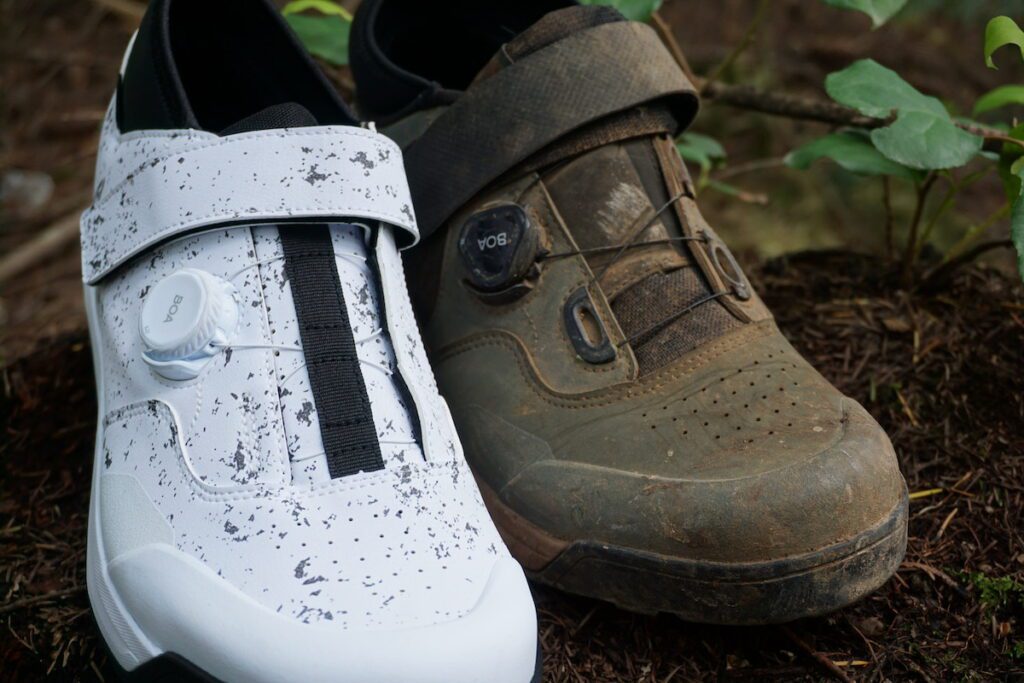 Concealed laces and a lace guide give the Hot Seats a clean look
Concealed laces and a lace guide give the Hot Seats a clean look 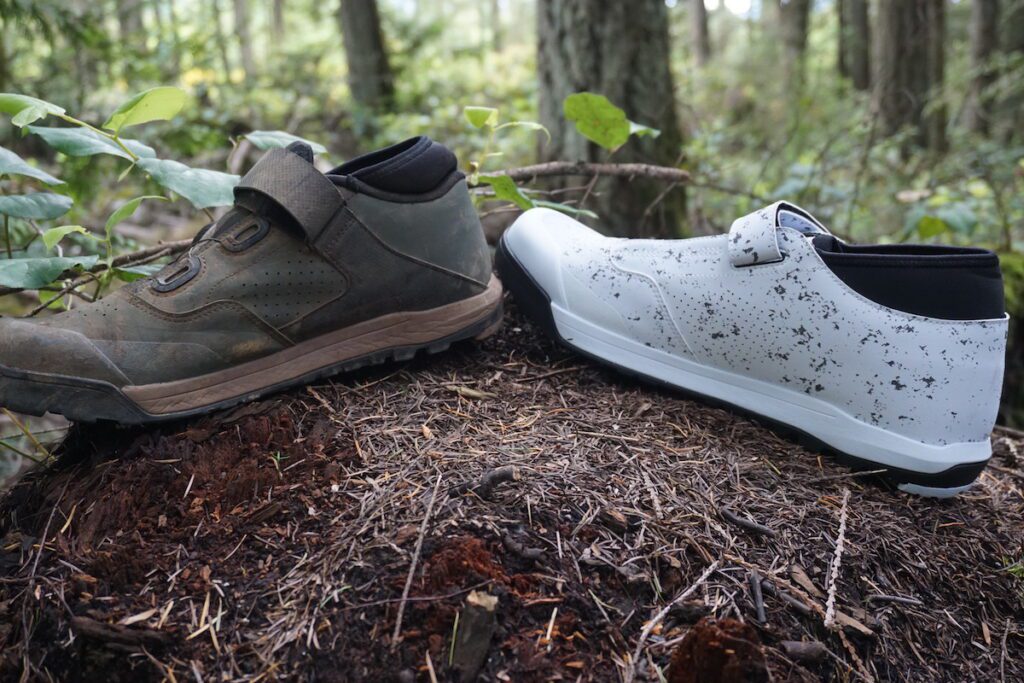 The Torbal 2.0 midsole (black) on the GE9 is gone on the GE9 HS
The Torbal 2.0 midsole (black) on the GE9 is gone on the GE9 HS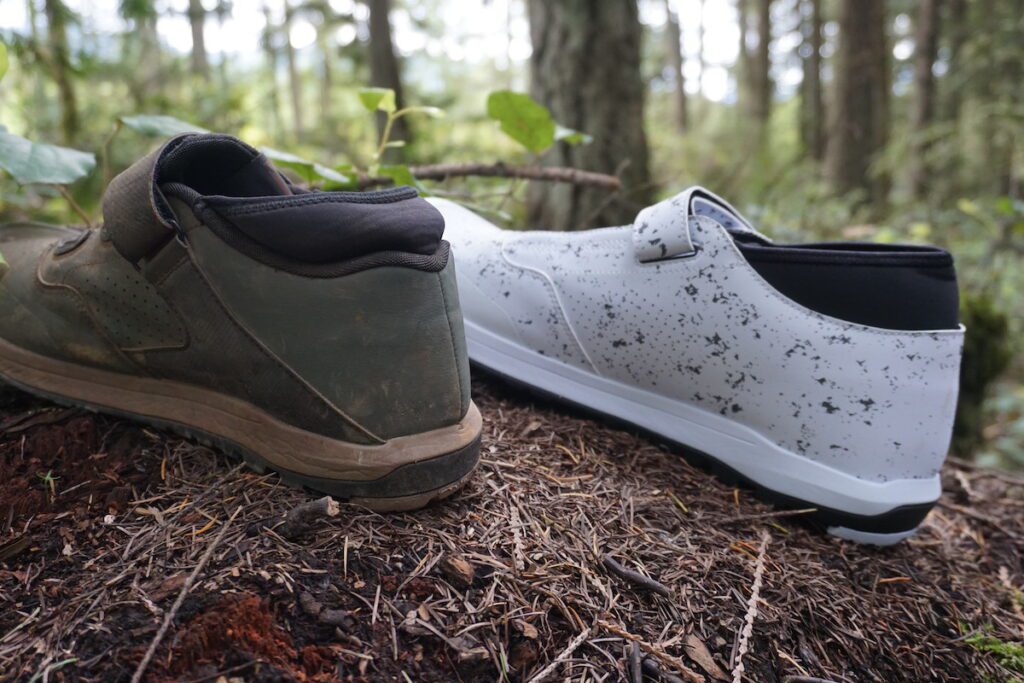 The change in how the neoprene cuff attaches to the ankle is subtle, but makes a difference
The change in how the neoprene cuff attaches to the ankle is subtle, but makes a difference
This change in construction pays dividends both on long descents, or more challenging descents, but also on long climbs. The closer fit gives more direct control for the downhill crowd. But, on very long descents, I noticed much less fatigue in my foot compared to softer shoes. Not having that ache creep into the arches of your foot makes it much easier to relax, stay settled on the bike and focus on the trail in front of you.
The same goes for long days, and long climbs in the HS. These aren’t as stiff as XC slippers, and you can still hike-a-bike comfortably in them, but they are stiffer and more efficient on the climbs.
The not-so-fringe benefit of less padding is that the HS are also cooler than the standard GE9. This is, again, a small change. But it was a noticeable change across some very sweaty mid-summer rides. It also felt like the strap was clamping down on my foot at a slightly better angle on the HS, though this is a smaller change.
Adding the tiny plastic shield to the Boa Li2 dials is something Shimano is slowly expanding across its line of footwear, even to the very racey new SPhyre XC-903s, and it’s worth it. It has already, on at least one occasion, spared the Li2 from being ripped off while sliding across some rocks. My arm did not fare nearly as well.
A note on fit
As for fit, I ended up preferring the tighter fit of the size 46 over the 47. Since there’s less padding in the HS construction, the tighter initial fit made it easier to find the perfect fit through little micro-adjusts over the course of the ride. With less change between the toe box and heel than on the GE9, the 46 also made the mid- and heel parts of my foot feel more secure than the 47. That closer fit is the whole point of the HS version, so, if you’re between sizes, following Shimano’s recommendation to size down instead of up seems to make sense.
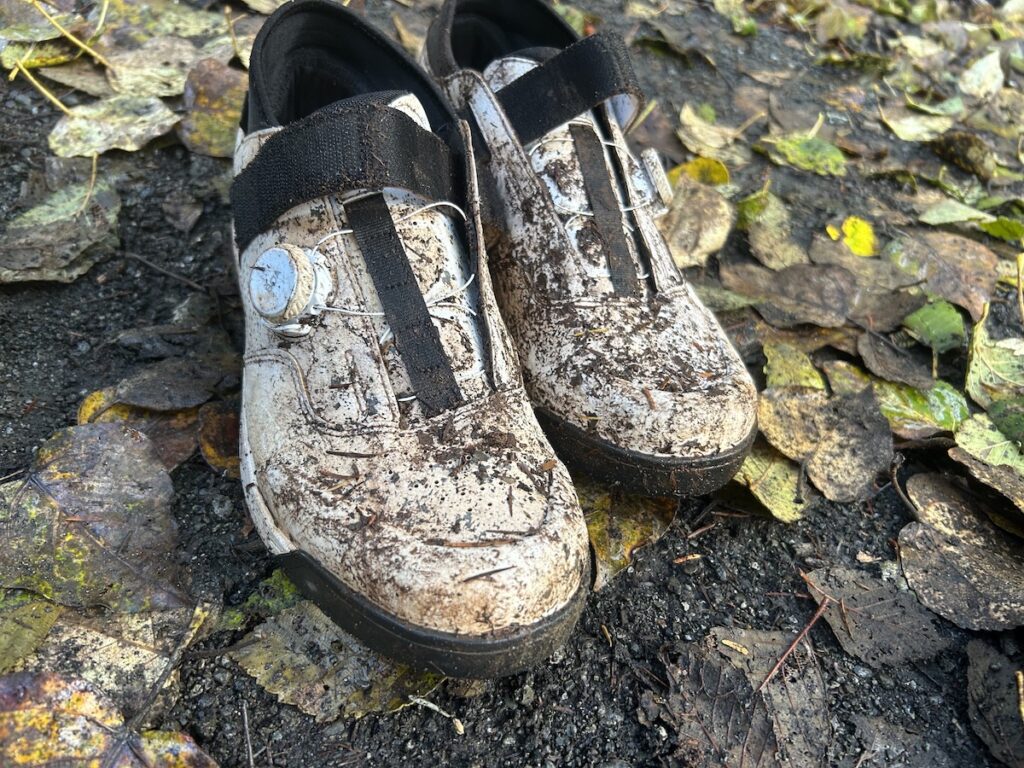 All this came off
All this came off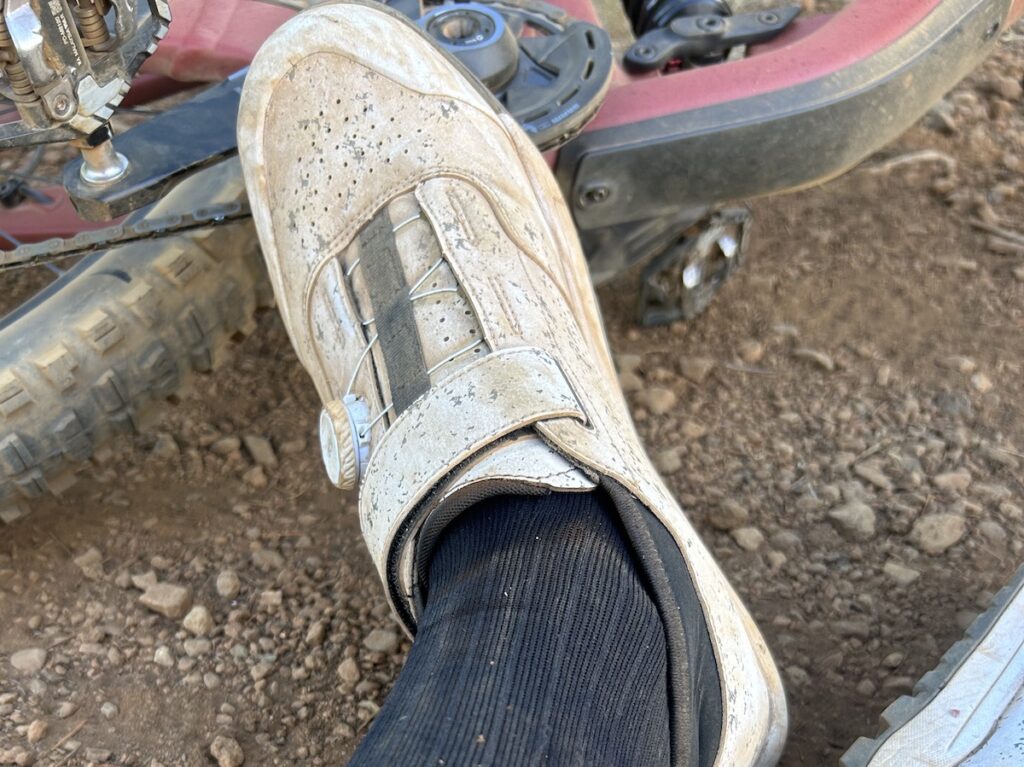 Not all of this did. Cleaning them right after a ride makes a big difference
Not all of this did. Cleaning them right after a ride makes a big difference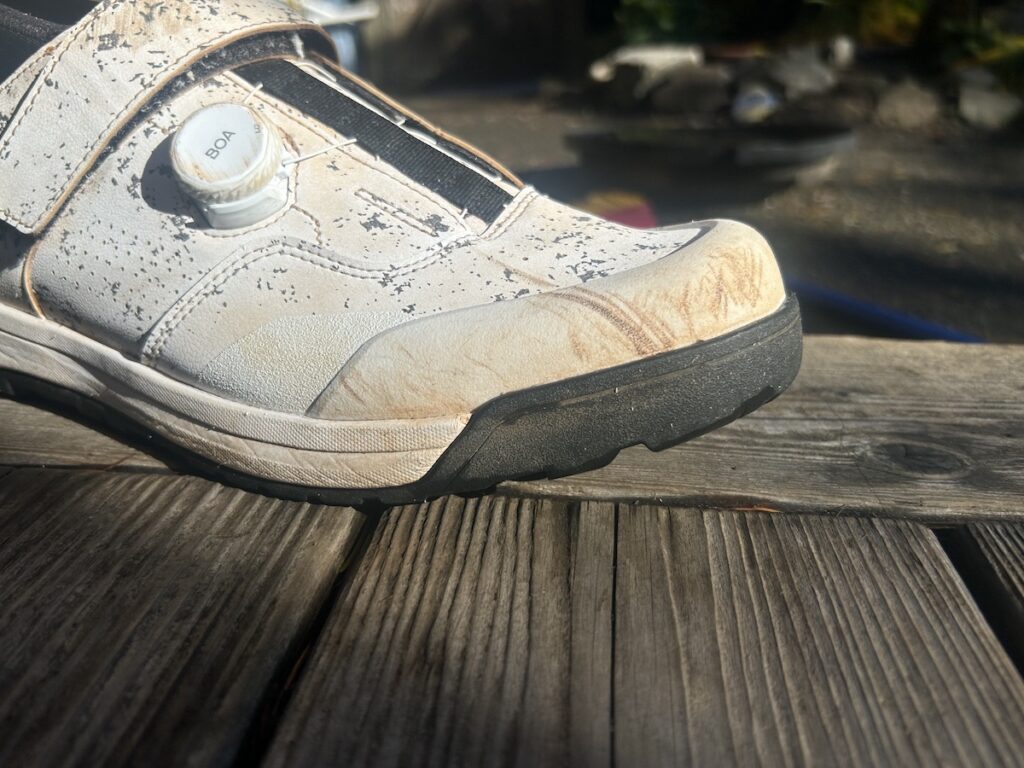 A few scars after six months on the trails isn’t bad.
A few scars after six months on the trails isn’t bad.
Race day white for a mountain bike shoe?
Also, I opted for the very loud white and black splatter version of the GE9HS instead of the more practical black version. In part because it’s a race shoe, and white is for race days. But also to see if it would actually stay clean. The HS shoes delivered on both fronts. Starting a ride with white shoes does feel fast, even though there’s obviously no physical difference in the shoes. It’s just fun. And the shoes did stay clean, albeit with some effort.
Dry, dusty conditions actually proved slightly more difficult to keep the white clean, as dust would settle into the fabric and stay there if I didn’t clean them promptly after a ride. The more recent, muddy rides that I thought would be the end of the HS bright, white glory actually proved easier to clean up after, so long as you don’t let the mud dry on. Most grit came off with some water, while a little scrubbing with a soft brush to get into all the small spaces restored the white to its glory, or close. The white protective part of the toe box proved the most difficult part to keep clean, showing scars and scrapes that were harder to polish out.
Who is the GE9HS for?
As I mentioned, I continued to go back and forth between the GE9 and GE9HS. I think both shoes are still great, just with slightly different purposes. Shimano obviously targets the race crowd with the stiffer construction and closer fit. But part of what makes that design work for enduro racers, who demand efficiency and control over day-long events, also makes this shoe appealing for anyone who likes long rides, long descents, or just pushing hard on the pedals but doesn’t want an XC-style shoe. I’ve really appreciated the HS on a few big days of late summer riding, and when trying to connect together longer stretches of technical descending.
That performance does come with an added cost, though. The Hot Seats are $350 vs $315 for the GE9. So, if you’re not finding fault with the GE9, aren’t really pushing descents or pushing pedals for multiple hours regularly, upgrading to the HS might not be worth they extra cost.
Shimano offers the GE900 HS in full sizes from 38-48, and in black or white.

